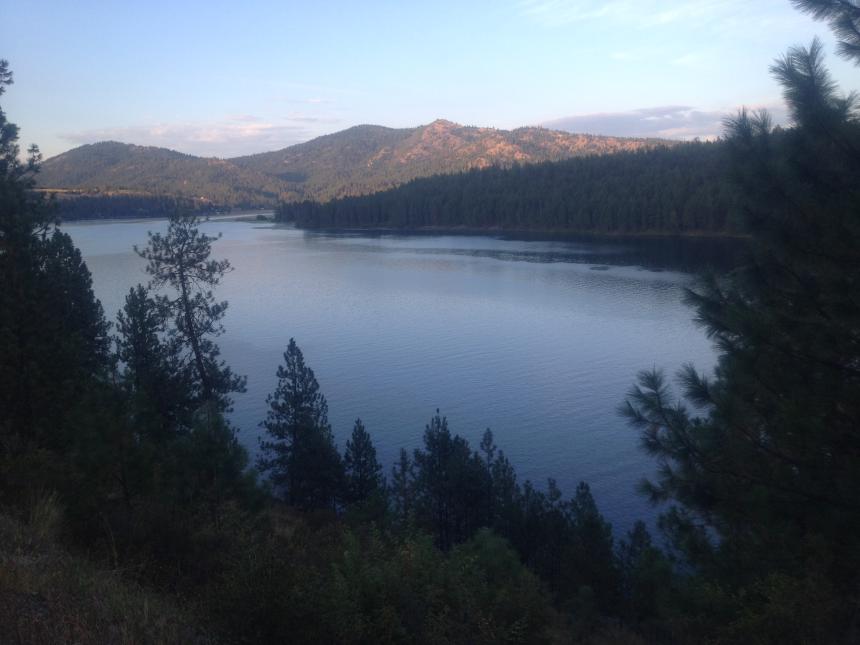Lake Spokane (Long Lake ) This Spokane River reservoir was created due to the construction of Long Lake Dam. This lake provides good fishing for warmwater fish, such as Yellow Perch, Largemouth and Smallmouth bass, and Black Crappie. Anglers should also expect decent fishing for Rainbow Trout, with 155,000 catchable size triploid Rainbow Trout stocked annually in the reservoir as part of a 10-year agreement between Avista Corporation and WDFW. These annual rainbow plants are mitigation for hydropower impacts on the Spokane River. All of the stocked triploid Rainbows are marked with a clipped adipose fin for ease of monitoring harvest through creel surveys.
Lake Spokane has several resorts/campgrounds, like at Riverside State Park, plus the old DNR campground and boat launch (currently operated by Riverside State Park) off State Highway 291. Access to this lake during winter is limited due to low water conditions which leave many of the lake's boat launches inaccessible.
Two-pole fishing is allowed
Shoreline access: Good - Most anglers fish this water by boat. Limited shoreline access is available near the public boat launches at the Nine Mile Recreation Area and DNR campground. Pay access is available at the private resorts.
Species you might catch
- Black crappie
- Bridgelip sucker
- Brown bullhead
- Brown trout
- Channel catfish
- Chiselmouth
- Common carp
- Kokanee
- Largemouth bass
- Mountain whitefish
- Northern pikeminnow
- Peamouth
- Pumpkinseed Sunfish
- Rainbow trout
- Signal crayfish
- Smallmouth bass
- Tench
- Walleye
- Yellow bullhead
- Yellow perch
Lake information
County: Stevens
Acreage: 4747.90 ac.
Elevation: 1538 ft.
Center: 47.831469, -117.762552
Open in Google Maps
Catchable fish plants
| Stock Date | Species | Number Released | Number of Fish Per Pound | Facility |
|---|---|---|---|---|
Visit the Catchable Trout Plants page for a more detailed search of trout plants in this or other bodies of water. To view or download the source data for this table visit the WDFW Fish Plants dataset on the Washington State Open Data Portal
Fishing prospects calendar
Rainbow trout
Kokanee
Largemouth bass
Smallmouth bass
Walleye
Yellow perch
Black crappie
Pumpkinseed Sunfish
Channel catfish
Brown bullhead
Yellow bullhead
Northern pikeminnow
Photos
